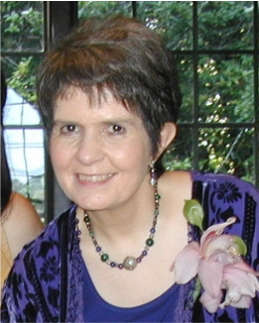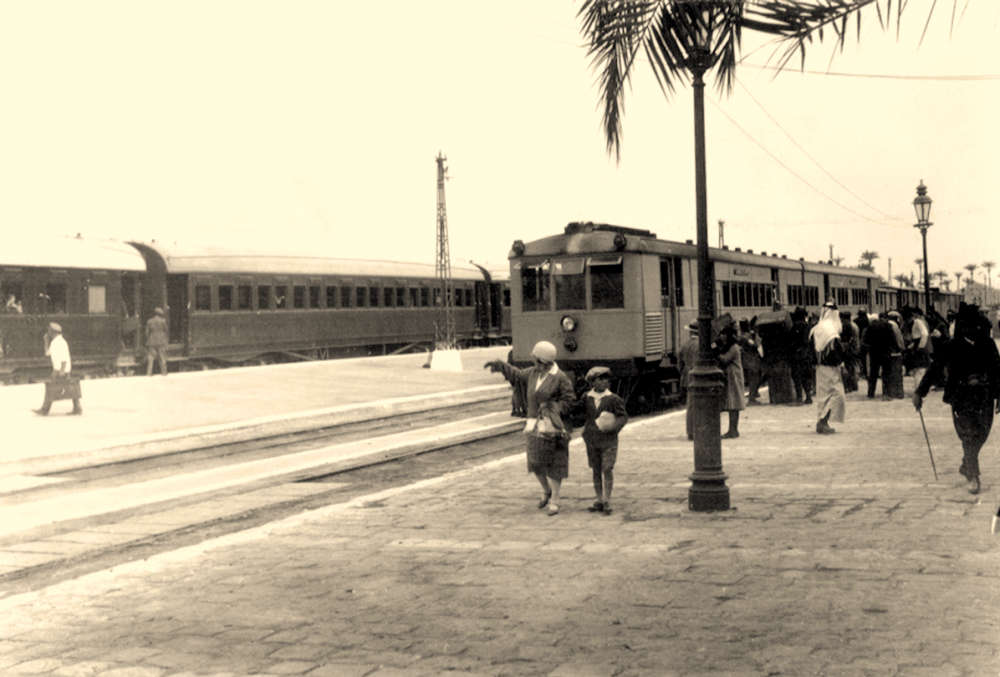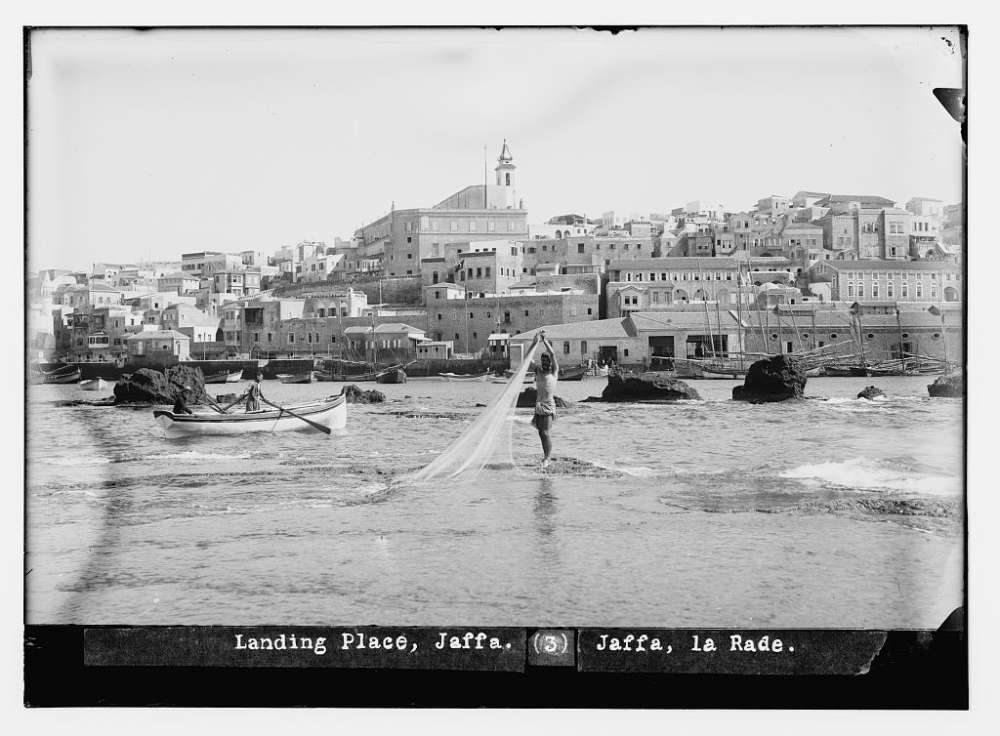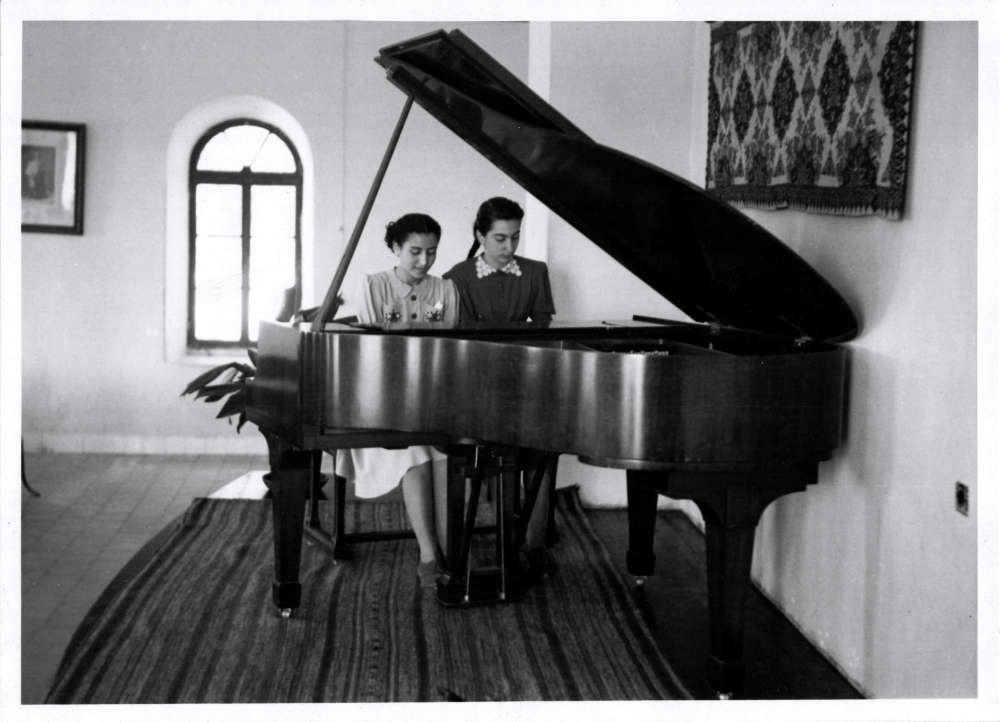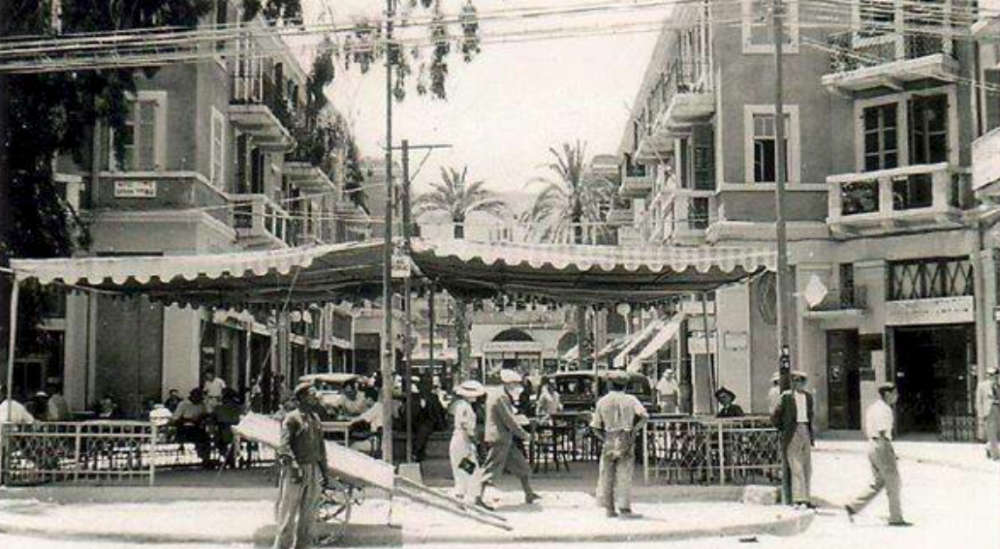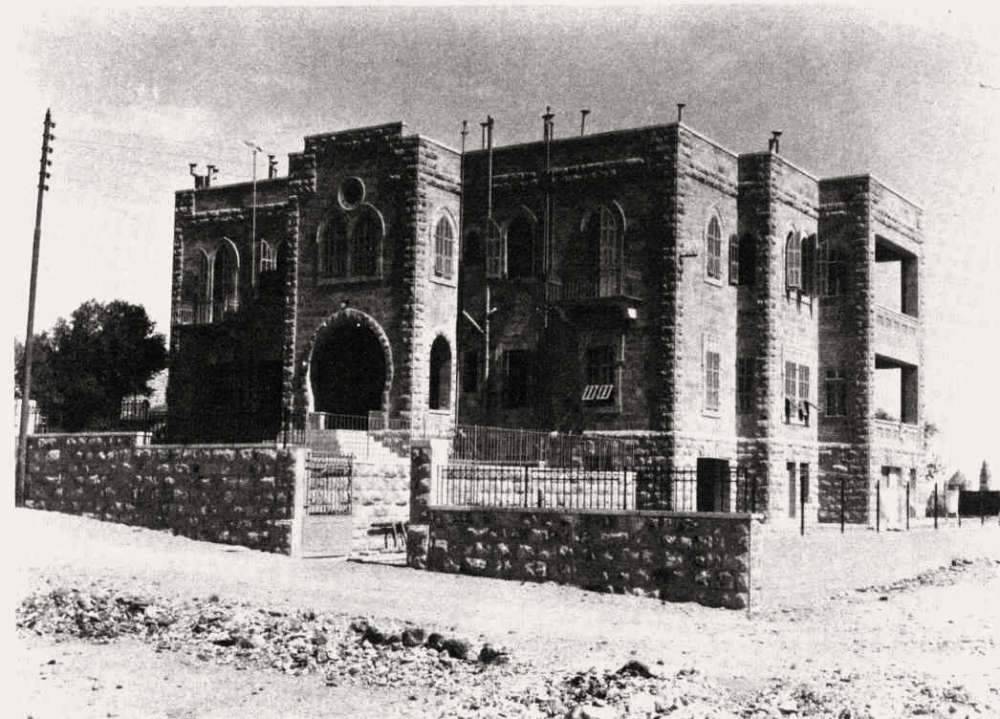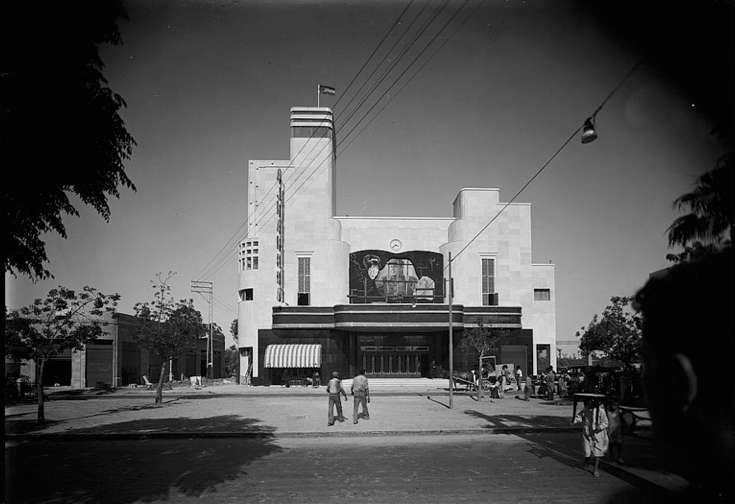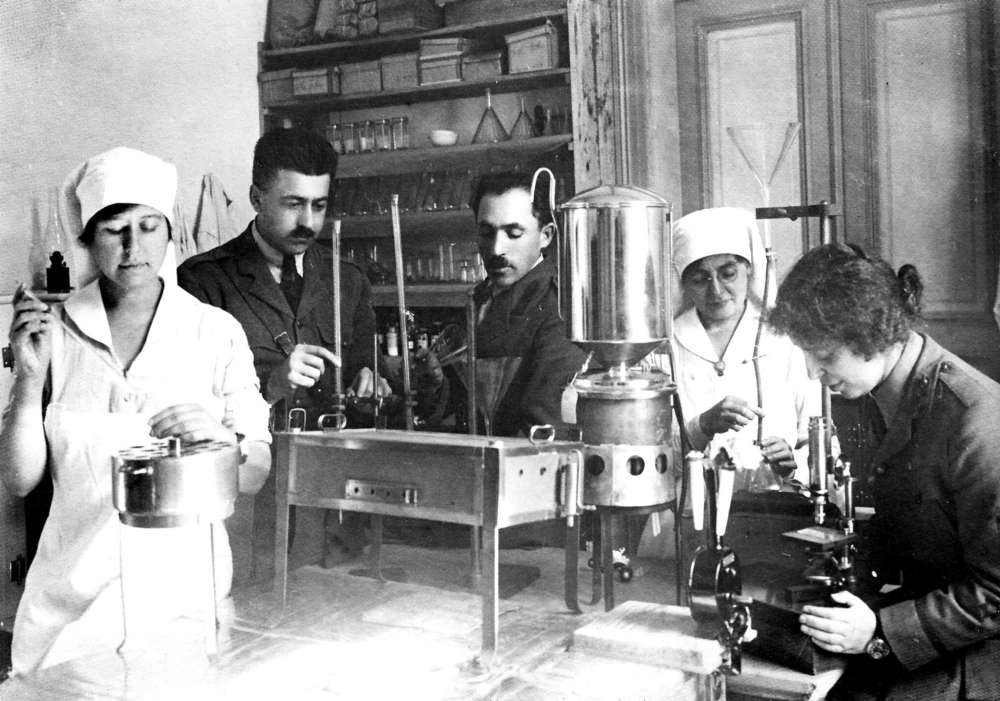For the past century, numerous voices have alleged that the land of Palestine is a barren desert. Orientalist painters, such as David Roberts, have depicted small rural agrarian villages scattered on rocky hillsides and Bedouin shepherds tending their sheep in romanticized Biblical tableaux, and historical figures have created myths to serve their colonial intentions.
As these photographs attest, however, Palestine was a vibrant society with an elaborate and sophisticated infrastructure, railways and ports, hospitals, orange groves, an advanced educational system, and beautiful private mansions. Nothing was barren about Palestine!
Al-Lidd Railway Station, 1932.
During the 1930s, Al-Lidd became one of the most important railroad junctions in the Arab world, with lines that connected Jaffa, Jerusalem, and Cairo. An ancient Biblical town, Al-Lidd was known through the nineteenth century as an intermediate center for caravans and for its magnificent Byzantine basilica over the tomb of St. George. Under Ottoman rule, it was an important center for soap and olive oil manufacture.
Jaffa postcard, depicting fishermen casting their nets, with the city in the background.
Jaffa port is reputed to be one of the oldest ports in the world. It was a bustling center for fishermen and for the exportation of its legendary Jaffa oranges. Jaffa and Haifa ports were considered to be the major ports in Palestine, and both were publicly owned and operated by the Government of Palestine. Jaffa was Palestine’s most advanced city in the development of its commercial, banking, fishing, and agriculture industries.
Ikram Budeyri with friend Margaret Donabedian during a piano recital in Swift Hall, Ramallah Friends School, June 30, 1940. Source: Ikram Budeyri.
Founded in 1869 by American Quakers, the Ramallah Friends School is one of the oldest educational institutions in Palestine. Many of its graduates have become world-renown academics, researchers, educators, scientists, artists, and musicians.
Haifa intersection.
Haifa was a central port and hub for Middle East crude oil. Its refineries facilitated the rapid development of the city as a center for heavy industry. Haifa was also among the first towns to be fully electrified. In 1925, the Palestine Electric Company inaugurated the Haifa Electrical Power Station, launching the beginning of the city’s industrialization.
Anis Jamal and Tabitha Ustinov’s mansion in Talbiyyeh, 1928. Source: As cited in Adnan Abdelrazek, The Arab Architectural Renaissance, 2017, p. 96.
In 1934, Anis Jamal, a Palestinian businessman, built a beautiful and spacious mansion in an extensive garden in Talbiyyeh. The windows on the second floor were arched, and a large arch surrounded one of the entrances. Anis lived on the second floor with his wife, Tabitha Ustinov, the aunt of actor Peter Ustinov, and their two children, Alexa and Alex.
Alhambra Cinema, Jaffa, 1937. Source: Library of Congress, American Colony Collection.
Alhambra Cinema opened its doors in 1937 in an Art Deco building in Jaffa that was named after the famous palace in Granada, Spain. It was one of the biggest and most luxurious cinemas in Palestine and was also used as a theater, hosting such famous artists as Umm Kulthum, Farid al-Atrash, and Leila Mourad.
The hospital of Dr. Fuad Ismail Dajani, Jaffa, 1940.
Dr. Fuad Ismail Dajani (1890–1940) founded Dajani Hospital in 1933 in Jaffa. Located close to Dr. Dajani’s house, it served as a maternity and surgical hospital for the local population and British officers.

